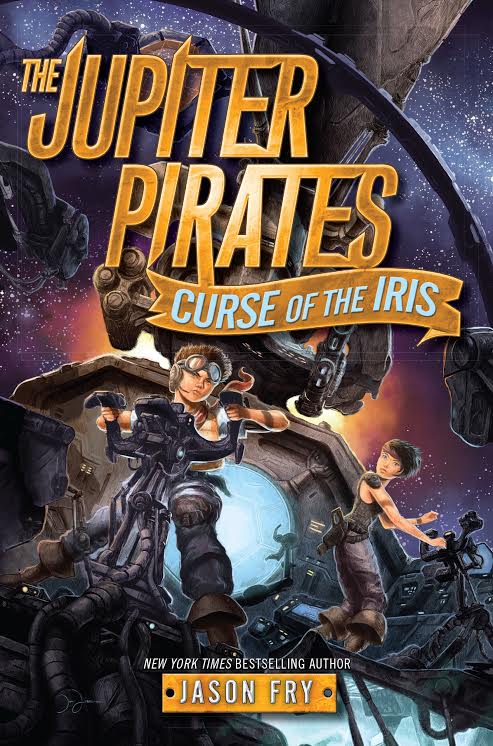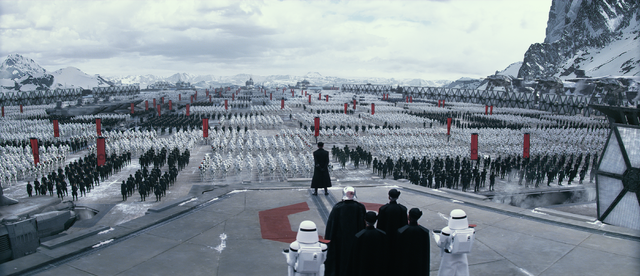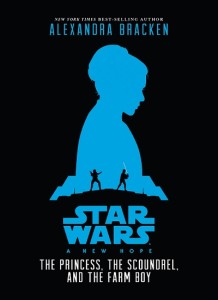 In part one of our latest interview with Star Wars dynamo author Jason Fry, we discussed his two recent Journey to The Force Awakens tie-in books, The Weapon of a Jedi and Moving Target (alongside Cecil Castellucci). Today we’ll move on to his most recent solo release, Servants of the Empire: The Secret Academy (expect us to have more on that next week as well), but first, we caught up on Jason’s own original series The Jupiter Pirates, whose third book, The Rise of Earth, comes out next year—and whose cover Jason was kind enough to share with us for its world premiere!
In part one of our latest interview with Star Wars dynamo author Jason Fry, we discussed his two recent Journey to The Force Awakens tie-in books, The Weapon of a Jedi and Moving Target (alongside Cecil Castellucci). Today we’ll move on to his most recent solo release, Servants of the Empire: The Secret Academy (expect us to have more on that next week as well), but first, we caught up on Jason’s own original series The Jupiter Pirates, whose third book, The Rise of Earth, comes out next year—and whose cover Jason was kind enough to share with us for its world premiere!
Man, that was a lot of titles for one paragraph.
So Jupiter Pirates is, in many ways, the age of sail in space. There are some family tensions in the second book, Curse of the Iris, and the tension mirrors the long-running argument over whether the Hashoones are pirates or privateers. The family has done and does some shady things in this book, and Tycho is sort of the audience surrogate in saying “hey wait, this isn’t right”—but his family doesn’t always see eye-to-eye about it. How do you romanticize age of sail in space without necessarily romanticizing the awful things that pirates do? And that’s leaving aside people like Mox who are just the worst, of course.
Hmm. Good question. I suppose this is a case where the built-in guardrails of writing kids’ fiction are a good thing – you’re not going to see pirates woolding someone (Google that with caution – it’s upsetting) or raping/slaughtering people. Bad things happen, but they’re mostly offscreen or implied. Which is honestly the way I prefer to work anyway.
Anyway, I think the more interesting debates in The Jupiter Pirates – for a reader of any age – are about other decisions to be made about right and wrong. What’s the right thing to do when you discover you don’t agree with a cherished family tradition? How about when you’re fighting for a larger cause that may or may not justify unsavory actions? (Which is the same question Cecil and I addressed in Moving Target, come to think of it.) Read More

![51gF3dYpeTL._SX329_BO1,204,203,200_[1]](http://eleven-thirtyeight.com/wp-content/uploads/2015/09/51gF3dYpeTL._SX329_BO1204203200_1.jpg) As it happens, we were long planning a series of pieces called “Gray Matters” on how the various sides in Star Wars are and ought to be portrayed in the new canon. Our first piece was either going to be about the Empire or the Rebellion, where we would discuss the comparative pitfalls of black and white morality vs moral grays and try to come up with a solution that was morally nuanced but still fit the morality tale that is the Star Wars saga. And lo – here came a novel called Lost Stars by Claudia Gray, featuring of all things a narrative about just how decent people serve as Imperial Loyalists. The coincidence (and the now doubly punny title) was impossible to ignore, so here we are!
As it happens, we were long planning a series of pieces called “Gray Matters” on how the various sides in Star Wars are and ought to be portrayed in the new canon. Our first piece was either going to be about the Empire or the Rebellion, where we would discuss the comparative pitfalls of black and white morality vs moral grays and try to come up with a solution that was morally nuanced but still fit the morality tale that is the Star Wars saga. And lo – here came a novel called Lost Stars by Claudia Gray, featuring of all things a narrative about just how decent people serve as Imperial Loyalists. The coincidence (and the now doubly punny title) was impossible to ignore, so here we are!![starwars-450x556[1]](http://eleven-thirtyeight.com/wp-content/uploads/2015/09/starwars-450x5561-243x300.png) On Monday, I presented
On Monday, I presented  Tomorrow sees the release of another three Star Wars novels, to add to the five released earlier this month on Force Friday. These three novels are special, written by three different authors with three wholly different adaptations of the Original Trilogy for a middle-grade (ages 8-12) audience. If you’ve read any of
Tomorrow sees the release of another three Star Wars novels, to add to the five released earlier this month on Force Friday. These three novels are special, written by three different authors with three wholly different adaptations of the Original Trilogy for a middle-grade (ages 8-12) audience. If you’ve read any of 